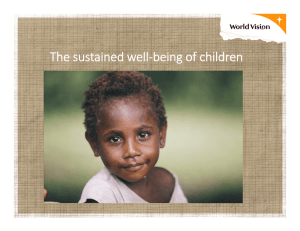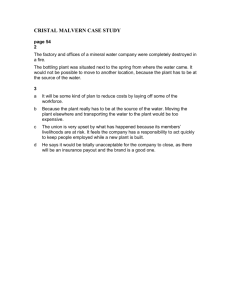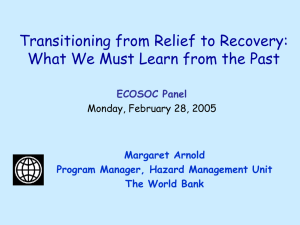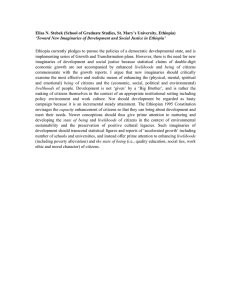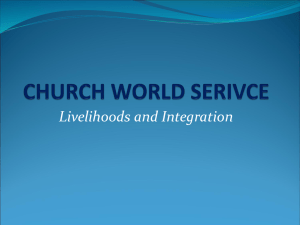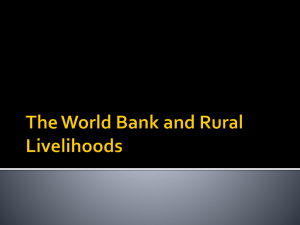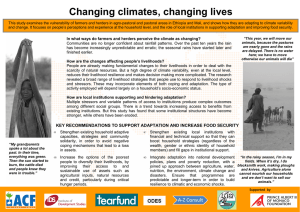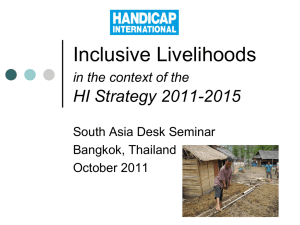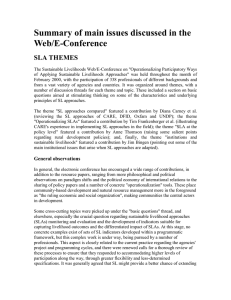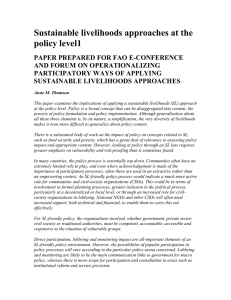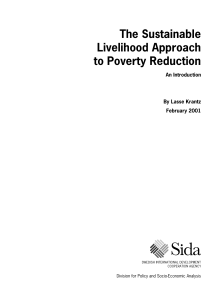What are livelihoods approaches?
advertisement
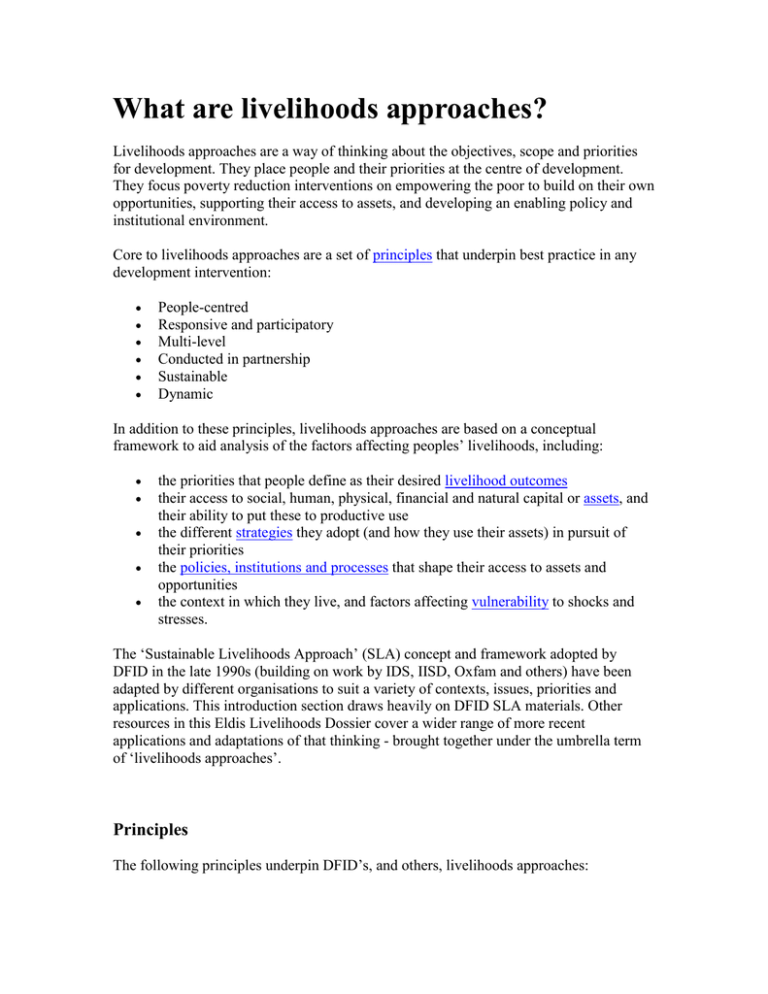
What are livelihoods approaches? Livelihoods approaches are a way of thinking about the objectives, scope and priorities for development. They place people and their priorities at the centre of development. They focus poverty reduction interventions on empowering the poor to build on their own opportunities, supporting their access to assets, and developing an enabling policy and institutional environment. Core to livelihoods approaches are a set of principles that underpin best practice in any development intervention: People-centred Responsive and participatory Multi-level Conducted in partnership Sustainable Dynamic In addition to these principles, livelihoods approaches are based on a conceptual framework to aid analysis of the factors affecting peoples’ livelihoods, including: the priorities that people define as their desired livelihood outcomes their access to social, human, physical, financial and natural capital or assets, and their ability to put these to productive use the different strategies they adopt (and how they use their assets) in pursuit of their priorities the policies, institutions and processes that shape their access to assets and opportunities the context in which they live, and factors affecting vulnerability to shocks and stresses. The ‘Sustainable Livelihoods Approach’ (SLA) concept and framework adopted by DFID in the late 1990s (building on work by IDS, IISD, Oxfam and others) have been adapted by different organisations to suit a variety of contexts, issues, priorities and applications. This introduction section draws heavily on DFID SLA materials. Other resources in this Eldis Livelihoods Dossier cover a wider range of more recent applications and adaptations of that thinking - brought together under the umbrella term of ‘livelihoods approaches’. Principles The following principles underpin DFID’s, and others, livelihoods approaches: People-centred: focusing on poor people’s priorities, understanding the differences between groups of people and working with them in a way that is appropriate to their current livelihood strategies, social environment and ability to adapt Responsive and participatory: listening and responding to the livelihoods priorities identified by poor people themselves Multi-level: working at different levels to reduce poverty- ensuring that micro level reality informs development of policy and an effective enabling environment, and macro level structures support people to build on their own strengths Conducted in partnership: with the public and private sector Sustainable: balancing economic, institutional, social and environmental sustainability Dynamic: recognising the dynamic nature of livelihood strategies and responding flexibly to people’s changing situations. Since guidance on livelihoods approaches was published in the late 1990s by DFID, other organisations have developed their own methodologies and approaches. Some have added new principles such as: Building on strengths: working to develop poor people’s strengths - their skills, knowledge and resources, rather than focusing solely on their needs Holistic: understanding the complex reality of poor people’s livelihoods rather than taking a purely technical or sectoral approach Livelihood Outcomes Livelihood outcomes Livelihood outcomes are the goals to which people aspire, the results of pursuing their livelihood strategies. Livelihoods approaches stress the importance of understanding and supporting poor people’s efforts to achieve these goals. Examples of livelihoods outcomes might include: increased income reduced vulnerability increased well-being improved food security more sustainable use of natural resources Livelihoods outcomes are important because they help us understand: the results of peoples’ livelihoods strategies in a particular context why people pursue particular strategies and what their priorities are how people are likely to respond to new opportunities or constraints
